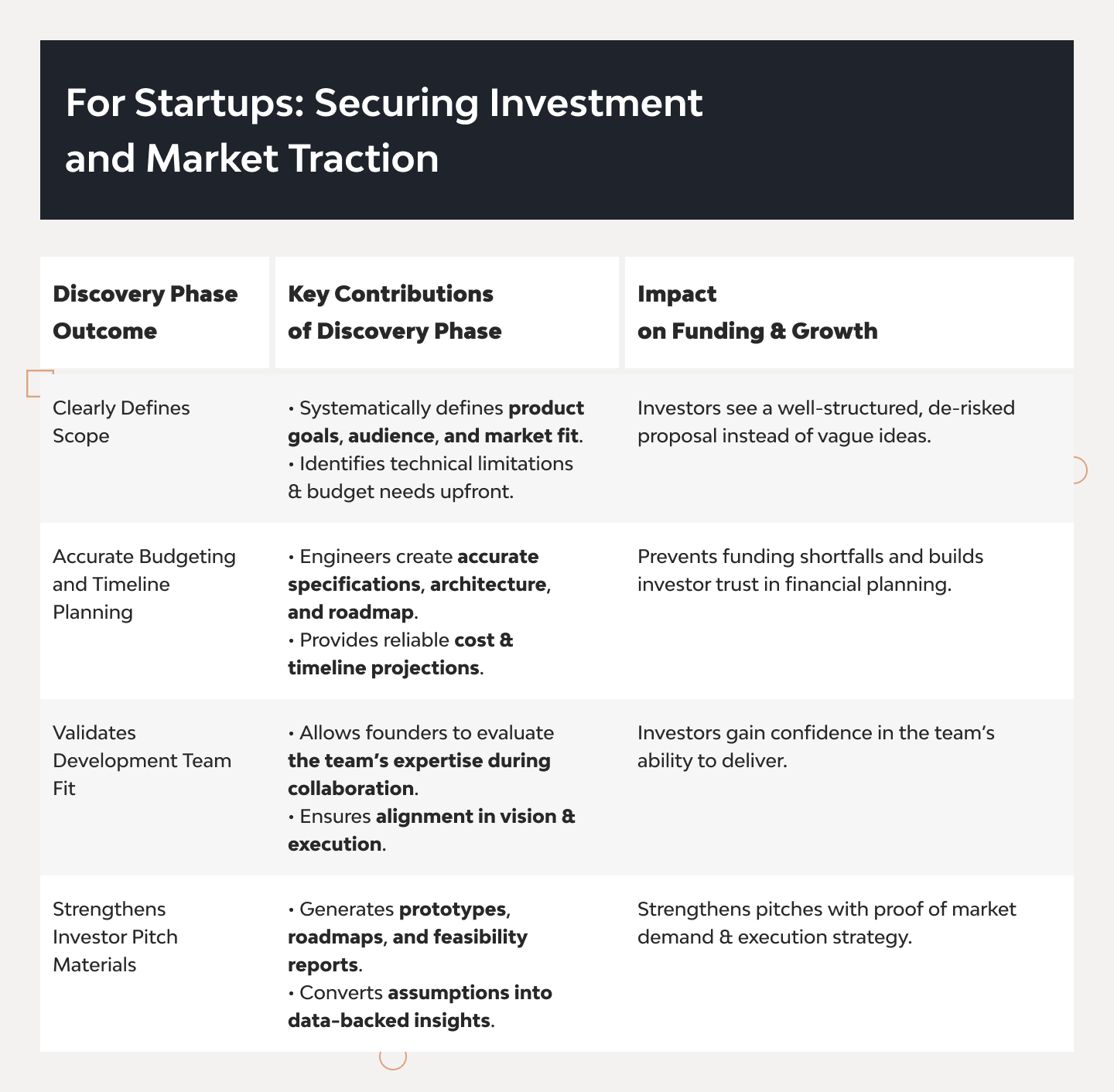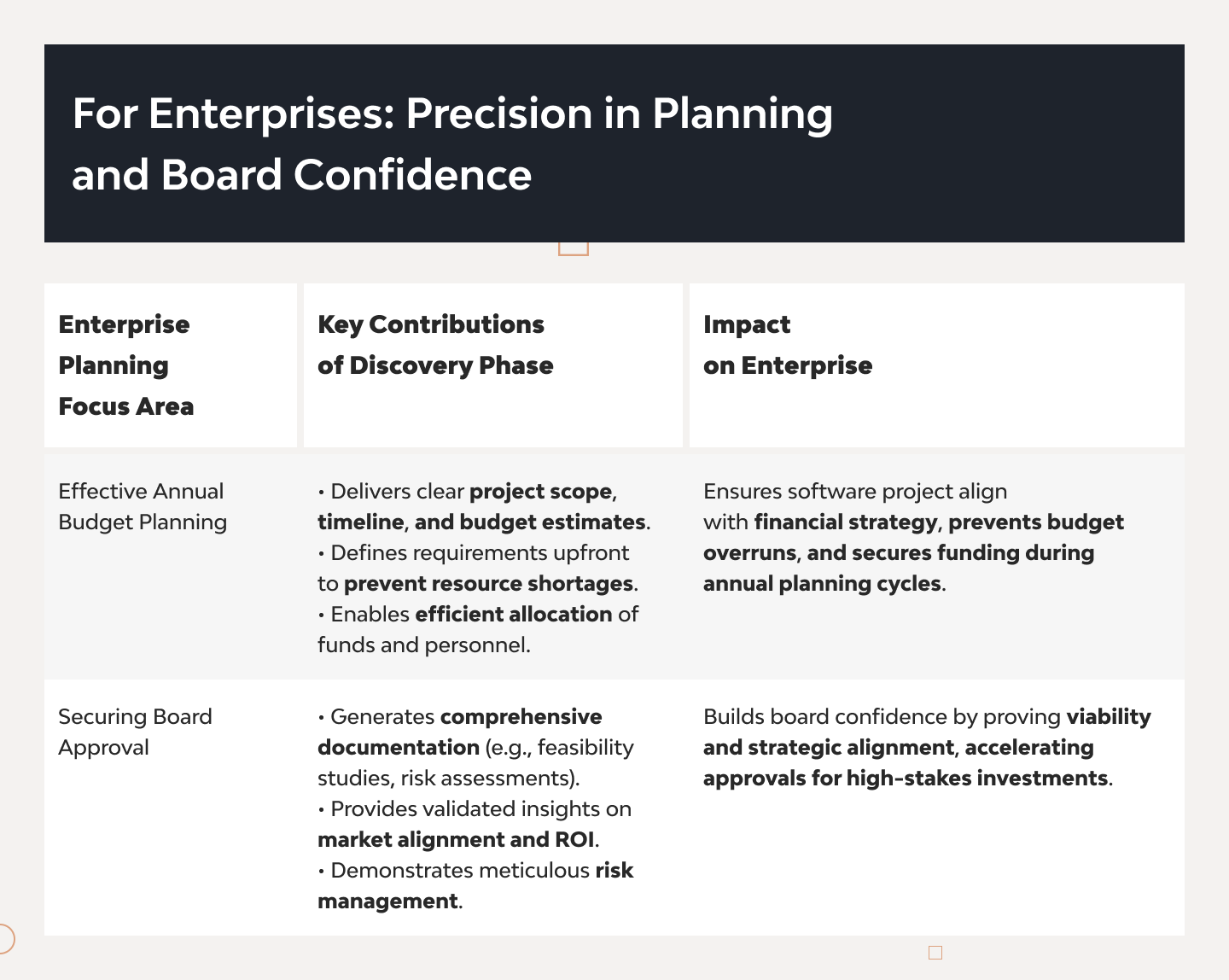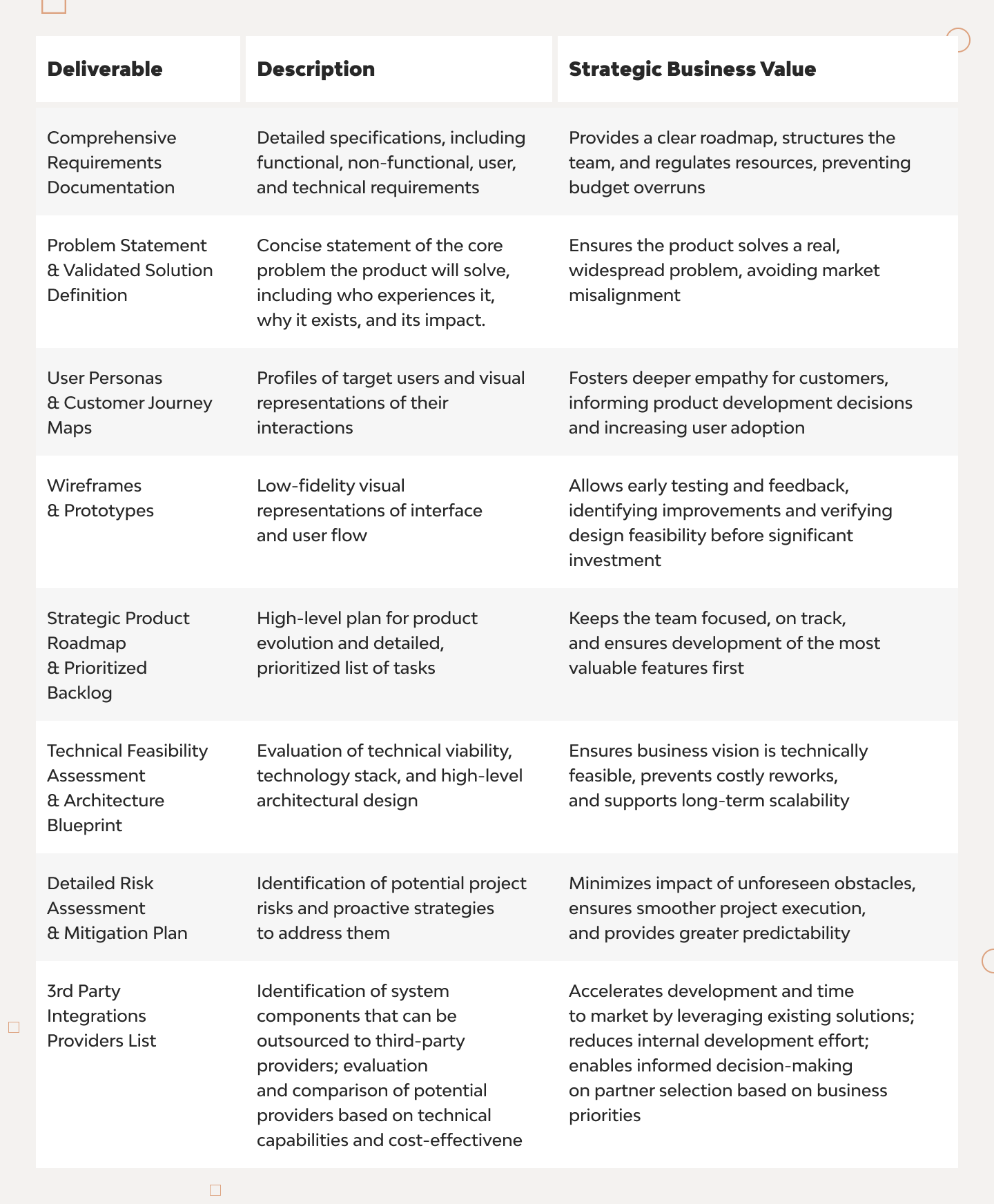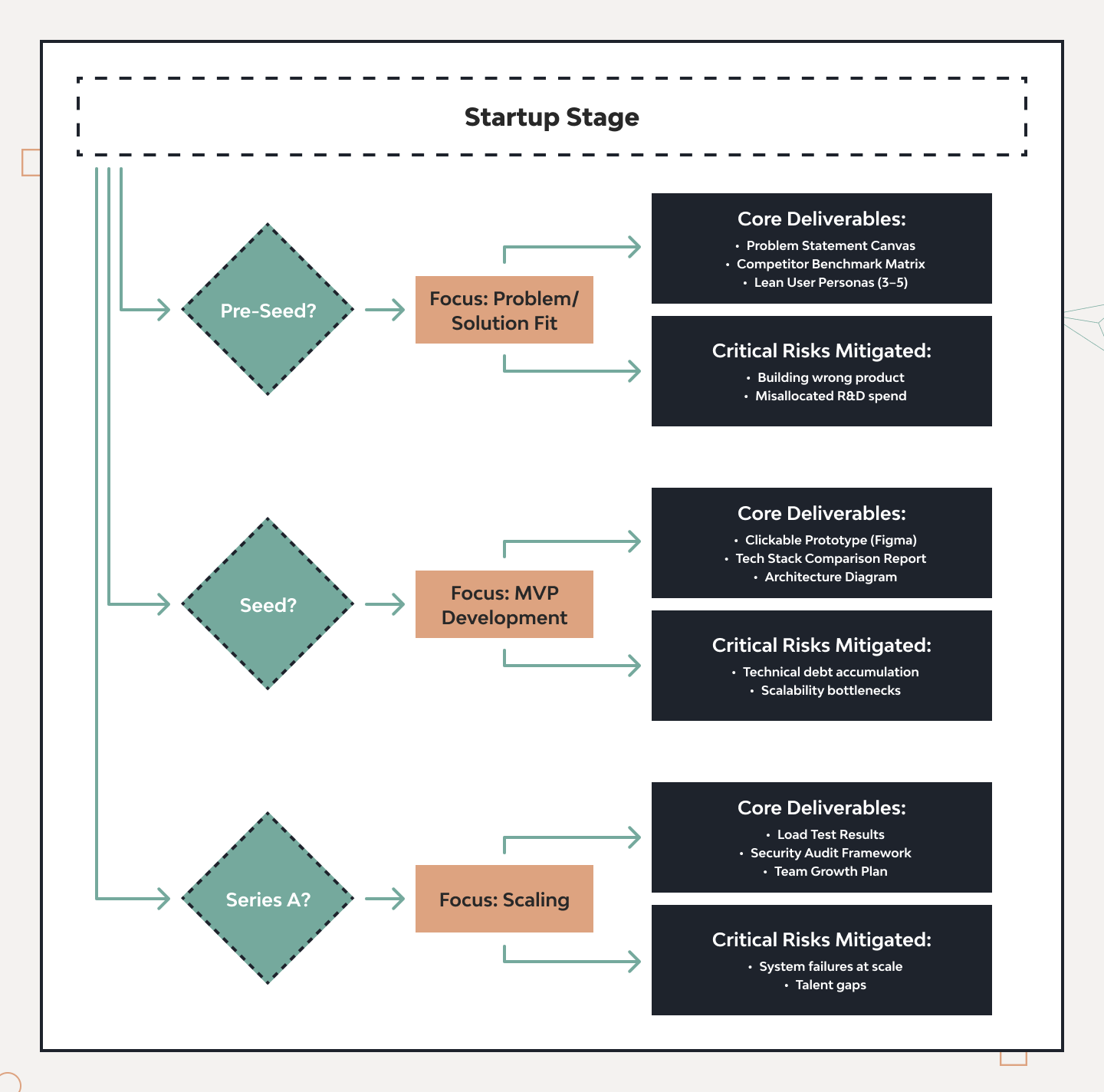What 2026 Taught Us About Building Software Right: The Strategic Impact of Discovery for Startups and Enterprises

I collaborate with enterprises across the USA, Switzerland, the UK, and the EU. Whether launching a new product or scaling an existing one, I’ve noticed the same pattern with startups Switzerland works with as well as other international companies: the Discovery Phase consistently shapes the success or failure of a project. My core mission is to define and optimize the development workflow for our partners and clients, ensuring a successful realization of each project’s objectives. I’ve identified distinct patterns and recurring challenges in development inquiries, pain points, documentation complexities, and variations in professional vocabulary.
This article brings those lessons together. It underscores why bypassing this stage is a significant strategic misstep, especially for projects with high stakes, complex architectures, uncertain market fit, or a lack of seasoned technical leadership.
These insights were only possible thanks to the openness of our clients—the ones who challenged assumptions, asked tough questions, and let us into their process early. I sincerely thank our clients for their numerous meetings, insightful discussions, and candid conversations. Your trust and collaboration are the driving forces behind our pursuit of excellence.
The Founder’s Dilemma: Why “Knowing Your Project” Isn’t Enough
Having worked closely with visionary founders and product owners, I’ve seen firsthand how deep conviction in one’s product idea can coexist with resistance to early-stage process steps like Discovery. Passion, urgency, and clarity of vision often create a strong sense that everything needed is already known—or should be. A common reaction we hear is, “Why do we need a Discovery Phase? We already know our project.”
This is a reasonable question—especially in fast-moving markets where speed feels like the only advantage. But this mindset often blurs a crucial distinction: knowing your idea is not the same as preparing it for execution.
Across dozens of conversations with startups from the USA, Switzerland, the UK, and the EU, one recurring sentiment stood out: “We don’t need Discovery—your team does. We expect you to develop what we already know and have clearly defined.”
While this seems efficient on the surface, it reflects a misreading of what Discovery is actually for. It’s not a checkbox for developers; it’s a strategic tool for the entire product team—including founders—to clarify logic, expose blind spots, and make informed decisions that affect budget, architecture, and scalability.
The Discovery Phase is, in fact, the essential first step for de-risking software investments and ensuring genuine market alignment. It represents a structured, analytical process designed to transform assumptions into validated insights, thereby laying a foundation for successful software development. This foundational stage is not merely a preliminary discussion but a deep dive into the strategic underpinnings of a project by the dedicated tech team.
This report will systematically demonstrate the tangible business value of Discovery, from significant cost savings and tech risk mitigation to enhanced competitive advantage and accelerated market entry. It will move beyond anecdotal evidence to present a compelling, data-backed case for why Discovery is not a luxury but a strategic imperative for both startups and established enterprises seeking sustainable growth and innovation.
To illustrate:
A startup invests six months and over $200,000 building a complex app. It launches. The result? 1,000 downloads—but only 5 active users.
What went wrong wasn’t ambition or effort. It was skipping the step that could have validated the concept, refined the approach, and prevented a six-figure misalignment between what was built and what users actually needed.
So what exactly is the Discovery phase—and why does it consistently make the difference between a missed opportunity and a market-ready product? Before labeling it a formality or overhead, it’s worth unpacking what this phase actually includes—and why it matters more than ever.
Demystifying Discovery: What This Critical Phase Entails
At its core, the Discovery Phase is a deep dive into strategic tech and business planning, extending far beyond a preliminary meeting. It systematically investigates and analyzes the project’s vision, target audience, market landscape, technical feasibility, and overarching business objectives. The fundamental goal is to precisely define what needs to be built, why it needs to be built, and how it should be built to achieve desired business outcomes. This initial and most critical step in the Software Development Life Cycle (SDLC) is crucial because, without a solid foundation, software development can quickly become chaotic, leading to delays, budget overruns, and unmet expectations.
While the structure and goals of Discovery are widely accepted, the terminology used to describe it can vary significantly between teams, vendors, and methodologies. To avoid confusion and ensure alignment, it’s useful to recognize the different names this phase may go by—especially when engaging with cross-functional or external teams.
Alternative Terminology
The Discovery Phase is known by various names across the industry, reflecting its diverse applications and methodologies. While the terminology may vary depending on the company, methodology, or team culture, the underlying purpose remains consistent. Understanding these terms helps founders recognize the phase regardless of a vendor’s specific jargon, emphasizing its widespread acceptance as a foundational practice. These alternative names include:
- “Setup Phase” implies foundational work, preparing the ground and necessary infrastructure for subsequent development.
- “Zero Sprint” or “Iteration Zero” is commonly used in Agile methodologies; this refers to the initial phase where teams establish the groundwork and prepare for upcoming sprints, clarifying requirements and aligning stakeholders. It is essential for successful project execution, even if not an official part of the Scrum framework.
- “Warm-up Phase” in certain technical contexts, has a specific meaning related to improving system performance—not to starting project work. For example, a warm-up phase in software and data systems helps the system operate more efficiently by preparing it to handle real workloads. Misusing this term in business reports can lead to confusion and reduce the report’s credibility. It’s essential to use “warm-up” correctly and reserve it for situations that truly apply to system optimization, not general project initiation.
- “Project Initiation Phase” A formal term emphasizing the project’s official start and foundational activities, including defining project goals and objectives, clarifying requirements, and setting expectations.
- “Planning & Analysis” directly highlights the core activities of this stage within the Software Development Life Cycle (SDLC), focusing on gathering business requirements, defining objectives, and conducting feasibility studies.
The consistent naming of this phase across various sources as a “critical,” “initial,” or “foundational” step underscores its universal recognition in software development best practices. This confirms that the Discovery Phase isn’t just a niche methodology; it’s a proven standard adopted by the world’s experienced and successful companies.
No matter what terminology is used, the function of the Discovery Phase remains the same—laying the groundwork for clarity, alignment, and execution. But while Discovery is valuable in nearly any context, there are certain scenarios where it becomes not just helpful, but absolutely essential.
When Discovery is Indispensable
Omitting the Discovery Phase is a significant risk, particularly for projects with substantial investment, complex requirements, uncertain market fit, or lacking dedicated technical leadership such as a CTO. The Discovery Phase helps align stakeholders, clarify requirements, and identify potential challenges early—all critical to increasing the likelihood of project success. Skipping this step to save time or budget may seem efficient in the short term, but it often leads to far greater costs, delays, and frustration in the long run.
There are specific cases where Discovery is not just useful but absolutely essential. These include situations where:
-
- The product idea is novel or disruptive, requiring thorough market validation to ensure it addresses real customer needs and has a viable audience. Without this phase, there is a significant risk of developing a product that goes unused.
- The project involves significant investment and potential risk. Discovery helps identify and mitigate potential risks early, reducing the chances of wasting valuable time and resources on a product that may ultimately fail.
- Multiple stakeholders have varying ideas about the product’s direction. Discovery provides a structured environment to align visions, gather input, and ensure everyone is on the same page regarding scope and objectives.
- Scalability, security, or complex integrations are key requirements. Rushing into development without proper technical analysis can lead to suboptimal architecture and costly issues later.
- There is no in-house technical lead or CTO. In this case, Discovery is essential to provide the technical guidance, architecture expertise, and strategic direction needed to make sound technology decisions and avoid costly missteps.
Bypassing Discovery is like building on quicksand—technical debt, integration problems, team skill mismatches, and budget explosions are guaranteed. Software development isn’t just coding or business—it’s navigating that uncharted ‘middle ground’ where hidden complexities thrive. Skip Discovery, and you’re gambling with failure.
While Discovery is critical across many types of projects, its impact is especially pronounced in the startup environment—where resources are limited, stakes are high, and assumptions drive early decision-making. For founders navigating uncertainty and pushing for speed, skipping Discovery can feel like a shortcut. In reality, it’s the most effective way to avoid building the wrong product for the wrong audience.
The following section explores how the Discovery Phase functions as a strategic tool in early-stage planning and validation—and why it should be treated as a core part of the startup roadmap, not an optional extra.
Discovery Phase in Startup Planning and Validation
For ventures, the journey from a compelling idea to a funded, market-ready product is fraught with challenges. Founders, often deeply immersed in their vision, may believe their innate understanding of the project negates the need for a formal Discovery Phase. However, investors demand more than intuition; they require validated strategies and predictable execution.
For Startups: Securing Investment and Market Traction
While startups rely on Discovery to reduce risk and validate assumptions in fast-moving, uncertain environments, enterprises face a different set of challenges. These organizations often operate within complex structures, legacy systems, and tightly governed decision-making processes. For them, Discovery plays a pivotal role not in justifying what to build, but in aligning how to build it within the broader organizational ecosystem.
The next section explores how Discovery supports enterprise teams by providing structure, de-risking innovation, and enabling confident, well-scoped execution at scale.
Discovery in Enterprise Environments: Context and Contribution
Established enterprises operate within structured environments, often characterized by annual budget cycles and rigorous board oversight. For them, the Discovery Phase is not just about de-risking a single project but about integrating new initiatives seamlessly into existing operations and securing high-level approval.
For Enterprises: Precision in Planning and Board Confidence
Whether in a fast-paced startup or a structured enterprise setting, the true value of Discovery lies in its outputs—the concrete deliverables that translate discussion into direction. These aren’t abstract documents or academic exercises; they’re working assets designed to guide development, support stakeholder decisions, and ensure the project stays aligned with real goals.
We break down the key deliverables generated during Discovery and how they can be tailored to your product’s vision, complexity, and growth strategy.
Deliverables You Can Leverage Tailored to Your Vision
The specific deliverables generated during the Discovery Phase are highly adaptable and can be meticulously selected and shaped based on the unique needs and priorities of the founders. This allows founders to focus on the insights and assets most critical to their particular vision, stage of development, and strategic objectives.
The quality of these deliverables depends entirely on the people behind them. Discovery is not just a set of tasks—it’s a collaborative process that brings together the right minds to ask critical questions, challenge assumptions, and define a realistic path forward.
Below we outlined who’s typically involved in Discovery, what roles they play, and how their combined expertise shapes outcomes you can trust.
Who is going to work on deliverables? What is the expected team?
For business-oriented founders, assembling a well-structured team is essential to ensure alignment between company goals and technical execution—while also mitigating risks early in the development lifecycle. Below is a typical core Discovery team composition, with each role playing a distinct part in shaping successful outcomes:
- Business Analyst (BA)
Acts as the critical bridge between business stakeholders and the technical development team. Their primary role is to translate overarching business objectives into structured, actionable requirements. They are instrumental in validating market assumptions through research and analysis, ensuring the proposed solution’s feasibility and alignment with real-world needs. In regulated industries (e.g., fintech, healthcare), the BA also maps out compliance needs and regulatory requirements, helping safeguard the project from future legal or operational hurdles.
- Project Manager (PM)
Orchestrates the discovery process. They are responsible for keeping the entire phase on track, diligently managing timelines, facilitating precise and consistent stakeholder communication, and ensuring all deliverables are met. A strong PM is vital in preventing scope creep, which can derail projects and budgets, and ensures that the discovery outcomes align seamlessly with your funding milestones or product launch objectives.
- Lead Developer / Solution Architect
Provides the technical foundation for the Discovery Phase. This role assesses the feasibility of the proposed solution, guides the selection of the most suitable technology stack, and outlines a scalable, maintainable architecture. Their early input is invaluable in preventing costly rework down the line and ensuring the long-term viability and maintainability of the product.
- UX/UI Designer
Focuses on crafting a user-centered experience. This role translates business goals into intuitive and effective user interfaces. They validate user flows by creating wireframes and interactive prototypes, ensuring the product aligns perfectly with customer expectations and provides a delightful user journey. This role is especially crucial in B2C or SaaS models, where user adoption and engagement drive success directly.
For more complex, enterprise-level projects, consider augmenting your core discovery team with specialized expertise:
- Data Architect
Essential if the project heavily involves Artificial Intelligence (AI), Machine Learning (ML), or significant big data processing. A Data Architect ensures data strategy, storage, and access are optimized for performance and future scalability.
- Security Specialist
Crucial in industries with high regulatory requirements such as finance, healthcare (medtech), or government. A Security Specialist identifies potential vulnerabilities and integrates security best practices from the very outset, ensuring robust protection and regulatory adherence.
- DevOps Engineer
Bringing in a DevOps Engineer early allows for assessing deployment strategies and continuous integration/continuous delivery (CI/CD) pipelines. Their insights can significantly streamline the transition from development to operations.
Whether you’re building a product from scratch or scaling an existing platform, this Discovery team structure is designed to adapt—offering both strategic oversight and deep technical insight. Each role complements the others, ensuring that no critical area is overlooked, from business logic and architecture to user experience and risk management.
But why does this particular team structure prove effective in both startup and enterprise environments? Let’s take a closer look.
Why Does This Structure Work for Startups & Enterprises?
This carefully considered team composition provides significant advantages for both startups and established enterprises. In markets like the USA, Switzerland, and the EU, where regulatory frameworks and technical rigor are essential, this team structure ensures no critical blind spots are overlooked.
For startups, it strikes a crucial balance between speed and due diligence, effectively helping to avoid the common “build first, fix later” trap that often leads to costly pivots or complete failures. A lean yet highly skilled Discovery team—typically composed of 3 to 5 key members—delivers comprehensive clarity without introducing unnecessary overhead, thereby setting a robust foundation for a smooth and efficient development phase.
For enterprises, it ensures that large-scale, complex projects are initiated with a deep understanding of all contributing factors, from market demand to technical infrastructure, minimizing late-stage surprises and maximizing return on investment.
Discovery Deliverables Toolkit for Startups
Our Business Analyst consulted me regarding the value of deliverables and adjusted that; we recognize that discovery deliverables only create value when they directly address an organization’s pain points. The toolkit’s stage-specific approach prevents the common pitfall of “boilerplate documentation” by forcing alignment between deliverable depth and actual decision-making needs.
For early-stage startups, this means resisting the enterprise temptation of exhaustive technical specs in favor of lightweight validation tools like problem statement canvases. These artifacts helped one fintech client pivot before wasting every dollar on misplaced development. At the scale-up phase, the focus shifts to deliverables like load test frameworks that protect growth investments, mirroring how our SaaS partners maintain 99.99% uptime during 10X user surges.
Ultimately, this toolkit doesn’t just document requirements; it institutionalizes the lessons from 200+ engagements where missing these targeted assets caused preventable failures. Whether you’re a solo founder or a corporate innovation team, the artifacts highlighted here represent the 20% of documentation that drives 80% of project success.
At Django Stars, we’ve seen how a well-executed Discovery Phase turns abstract plans into validated strategies. The following case studies offer a closer look at how Discovery directly influenced successful outcomes across real projects — from early-stage startups to enterprise-grade platforms.
Discovery in Action—Lessons from Django Stars
Software development companies such as Django Stars consistently integrate a Discovery Phase into their project lifecycle. This critical stage ensures alignment between vision and execution, helping clients refine product roadmaps and define technical requirements, and validate ideas through prototyping.
Case Study: IllumiDesk – Scaling an AI EdTech Platform
A prime example of the Discovery Phase’s impact is Django Stars’ collaboration with IllumiDesk, a US-based EdTech platform. Struggling with scalability and legacy tech limitations, the client needed a complete architectural overhaul to support enterprise growth.
The Discovery Phase enabled Django Stars to:
- Conduct a deep technical analysis, designing a scalable, future-proof architecture.
- Align stakeholders—resolving critical pain points early, as noted by IllumiDesk’s founder, Greg Werner (Clutch):
“When we completed the discovery project with Django Stars, we found that those pain points would be resolved.”
The outcome? A revamped platform featuring:
✔ Interactive course tools
✔ An assignment editor
✔ LTI integration for seamless learning data migration
✔ ChatGPT-powered code testing
✔ A role-based dashboard
This case underscores how discovery mitigates risk in complex, large-scale transformations—turning uncertainty into a clear execution plan.
While not always labeled explicitly, rigorous initial planning is a hallmark of Django Stars’ projects worldwide:
1. Diviac (Switzerland/EU): Cloud-Based Travel Platform
A niche scuba-diving travel SaaS with a ready design still benefited from Django Stars’ technology assessment, ensuring optimal stack selection for scalability and user experience.
2. Sindeo (USA): Mortgage App Revolution
For this U.S. mortgage disruptor, Django Stars’ domain expertise and rapid delivery highlighted the value of upfront market and regulatory alignment.
3. iCANS (USA): AI-Powered Dumpster Rental Management
A meticulously planned centralized dashboard, AI dispatch system, and QuickBooks integration led the client to praise (Clutch):
“Every detail—functional or aesthetic—was tackled with precision.”
4. Healthcare (Under NDA): Compliance-Critical Development
Here, a dedicated “Project Initiation” phase ensured requirements were vetted against industry regulations before development began—proving vital in high-stakes sectors.
Across these examples, a common thread emerges: projects are launched with a solid understanding of business needs, technical feasibility, and market context. This approach addresses the founder’s early concern—“we “already know our project”—by ”transforming internal assumptions into a validated, shared strategy.
Final Thoughts
The difference between a visionary idea and a successful software product lies in disciplined execution, beginning with Discovery. Whether you call it a Setup Sprint or Zero Sprint, this phase transforms assumptions into actionable strategies while saving 6-12 months of costly corrections. As a software development company for startups that guided 130+ ventures through this critical stage, know the best programming language for startups and can recommend the right tech stack to balance scalability, speed, and cost efficiency, we’ll help founders like you:
– De-risk investments with validated architectures;
– Accelerate funding through investor-ready documentation;
– Prevent runway waste via precise roadmaps.
Still skeptical? Perfect. Let’s turn your most strenuous objections into a coffee meeting. I’ll bring the case studies; you bring the hard questions.
- I'm a founder, and I already have a very clear idea of my project. Why do I need a Discovery Phase?
- Even with a clear vision, the Discovery Phase helps you translate that vision into a detailed, actionable blueprint. It is the first step to truly understand and plan your software project before any coding even begins. It's like creating a detailed blueprint for a building before you start laying bricks, ensuring you build exactly what you need, how you need it, saving you time and money in the long run.
- What exactly happens during a Discovery Phase?
- The activities can vary but generally include in-depth discussions about your business goals and user needs, market research and competitor analysis, user interviews and persona development, technical feasibility assessments, creating wireframes and mockups, defining user flows, and developing a preliminary project roadmap and budget estimates. One collaborative workshop will be conducted to facilitate key discussions and alignments. Throughout this process, a dedicated Business Analyst will run the process to translate your business vision into a comprehensive technical plan.
- Is the Discovery Phase only for large, complex software projects?
- While it's particularly beneficial for complex projects, a Discovery Phase (even a scaled-down version) can be valuable for almost any software development. It ensures that even a smaller project is built correctly, avoiding costly misunderstandings and reworks or even redevelopment later on.
- How long does a Discovery Phase typically last?
- The duration varies depending on the project's complexity (no universal timeline). It can range from 5 business days for a very simple project to 4 weeks for highly complex enterprise-level solutions. The key is to dedicate enough time to thoroughly understand and plan before committing to development.
- Will the Discovery Phase guarantee my project's success?
- While no single phase can guarantee success, the Discovery Phase significantly increases your chances of success in the custom software development process. Identifying potential risks, validating assumptions, and creating a solid plan upfront drastically reduce the likelihood of costly missteps and ensure your development efforts align with market needs and business goals. It's a proactive step to build confidence and reduce uncertainty.
- What's the most significant risk of skipping the Discovery Phase?
- The most significant risk is building the wrong product or creating the right product in the wrong way. This often leads to significant budget overruns, missed deadlines, poor user adoption, and a product failing to meet its objectives. It's like starting to build a house without an architectural plan – you're likely to encounter unexpected problems and costly corrections.











